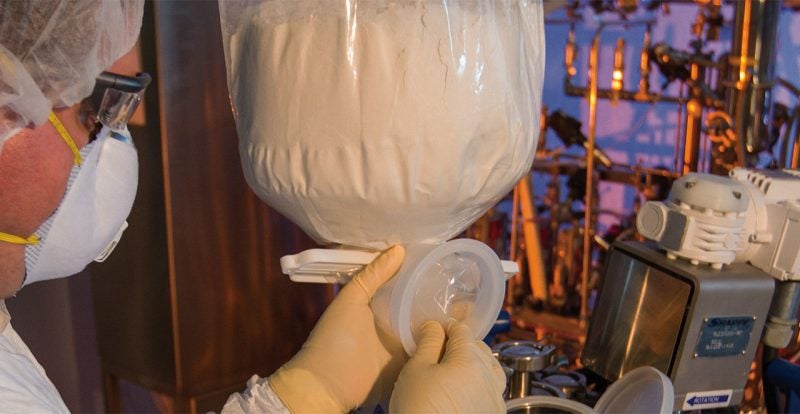
Pharmaceutical drug development is continually challenged to provide better compounds to treat a wide range of disease and illness.
In the small molecule development area, there has been significant growth in Highly Potent Active Pharmaceutical Ingredients (HPAPI) – compounds that are highly toxic.
HPAPI’s have proven effective for patient outcomes but manufacturing of these compounds must be highly controlled to assure operators are protected from the drug affects.
The potency of these compounds has dramatically increased the need for containment technology or engineering controls in the manufacturing process.
Less potent compound manufacturing was often carried out with little or no containment and, in some cases, relied on PPE. This is no longer possible when dealing with HPAPI and particularly when manufacturing takes place in a shared facility.
Potent compounds are a great hazard to operators and, if not controlled, can be hazardous to patients. The solution is to implement containment technology to contain at the source and assure the risk of exposure and contamination is mitigated.
Over the years, containment was achieved using stainless-steel devices to close processes and transfers of the product. These devices are expensive and often restrict the operator’s ergonomics to perform operations.
As far back as 1997, Eli Lilly saw the growth in HPAPI compounds would ultimately cause high capital expenditure on containment devices and long-term expenses for cleaning and maintenance of these stainless-steel containment systems.
Eli Lilly looked to solve this problem and turned to ILC Dover, a specialty engineering and manufacturing company focused on using flexible materials and the sole manufacturer of the space suit for NASA. This was the start of single use products for pharmaceutical containment.
Since 1997, the pharmaceutical manufacturing market, along with biopharmaceutical manufacturing, has quickly adopted the idea of single use containment. This has not been an easy feat as the containment requirements or the Operator Exposure Levels (OEL) have dramatically changed with the development of HPAPI compounds.
Having established that the technology works, what is the value proposition? It comes in the form of CapEx savings and OpEx savings. The single use systems use qualified plastic materials made into the containment control. The plastic material is often a film that has been developed for high strength and meets a full range of regulatory compliance.
Using plastic film structures instead of stainless-steel systems greatly reduces the capital cost while meeting the containment requirement and makes retrofit to existing equipment much easier, as well as saving the ergonomics needed for operator activities.
It is here that the real savings in OpEx is realized. After a process is complete, the single use containment is disposed of. No cleaning, no validation, and no hold times that delay production.
Many processors ask the question: “Is single use designed for one-time use and does that make it safe?” The reality is a single use containment system must be robust and is often used for entire campaigns.
Before implementation, a Risk Assessment should be carried out to evaluate the type of single use system and to assure it will meet all process needs. The useful life of the single use product is based on quality SOPs and when the process dictates cleaning is required.
The cost of cleaning includes a labor-intensive component combined with the cost of materials and validation processes. This comes with no guarantees that a surface has been cleaned to the point that it is safe to be used for the next product.
ISPE RiskMaPP document outlines that ‘retention’ or residual product on a surface is very common and is a risk for cross contamination. RiskMaPP goes on to report that the data collected indicates that surfaces are never completely clean, and residue of the drug compound exists regardless of diligence.
The European Medicines Agency provided new guidance in 2015 with implementation of the Health Based Exposure Limit (HBEL) guideline to require a scientific based analysis to determine exposure limits to the patient from cross contamination.
No longer can cleaning limits be applied but a toxicologist must evaluate each compound to establish the limit. The HBEL further puts a burden on the processor to prove that surfaces are clean below the calculated limits.
With a single use containment system, there is no risk of retention because it is meant to be disposed of. The value of this can vary but will always be a reduced cost for disposal over the cleaning of a surface.
Take for instance the DoverPac FIBC product compared to a stainless-steel IBC. After using the DoverPac, it is sent for disposal, most likely incineration, with no cleaning.
A global consciousness has awoken around the use of plastics and the environmental impact of straws, plastic bottles and other materials. In those cases, there are reasonable alternatives to remove the danger that is created.
In the case of single use containment for HPAPI production, it can be argued that these plastic materials not only reduce the cost of drug manufacturing but reduce the use and disposal of valuable natural resources, including water.


